
Themes
tribal languages and literature
KUKU JI DE BAGAN VICH, jammu & kashmir
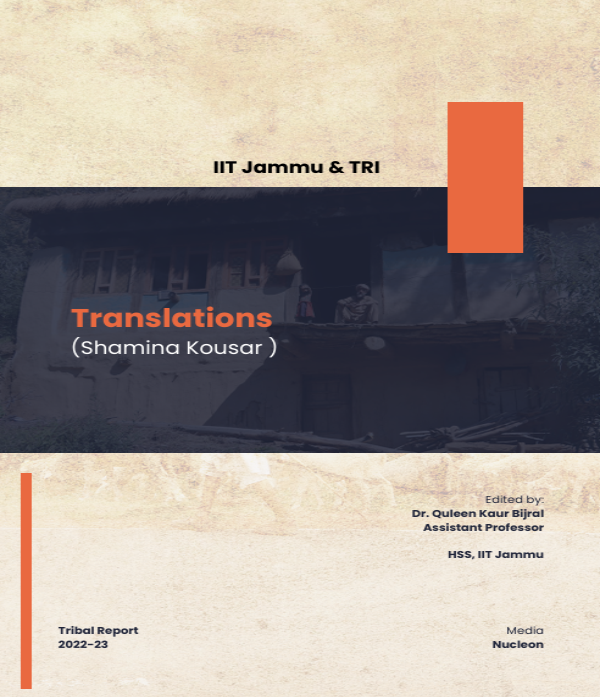
Shamina Kousar is renowned for her poetry, which encompasses the deep layers of rural as well as cultural life. Her poems tend to carry the entwining of nature, human feelings, and symbolic beings such as the cuckoo, which she employs to study issues of love, conflict, and contemplation. In "Kuku Ji De Bagan Vich," Kousar's craftsmanship comes across as she brings the reader into a place where simplicity and sheer emotional depth coexist, establishing her as a leading figure in modern poetry.
The lines of "Kuku Ji De Bagan Vich" provide a rhythmic journey through opposing emotions, with every line adding to a real image of the garden and the symbolic cuckoo. The structured verses of the poem lead readers on a journey through a world of life and death, of love and war. The form renders the poem old-fashioned, nearly folk-like, yet deep in resonance while offering a compelling tale through simplicity and imagery.
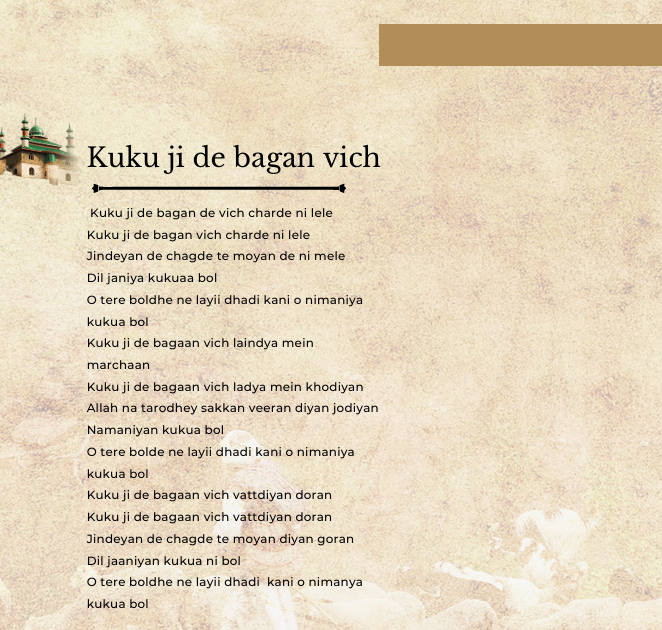
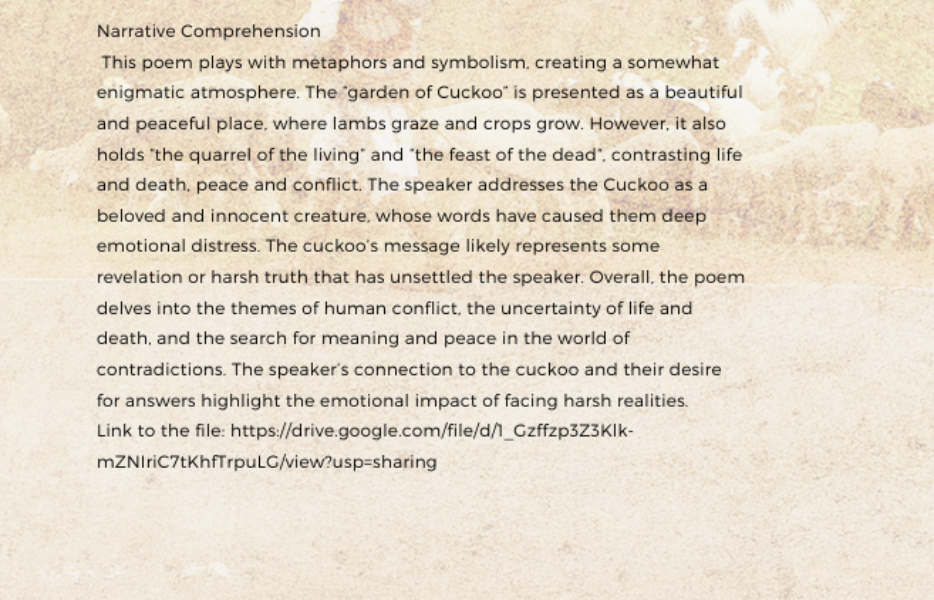
The poem uses a rhyme scheme that supports its lyrical rhythm, echoing the circularity of the themes it addresses. The rhyme provides a musical quality that echoes the cuckoo's song, adding to the folk nature of the poem. This repetitive pattern also emphasizes the poem's main themes, including the tension between harmony and discord. The rhyme scheme ultimately contributes to the emotional intensity of each verse, capturing both the tranquility and tension in the garden.
The mood of "Kuku Ji De Bagan Vich" is that of melancholy, curiosity, and introspection. Kousar employs the garden and the cuckoo as symbols to examine themes of life, death, and human conflict. The poem deals with the nuances of emotions in loss, missing, and reconcilement. The cuckoo song reminds us about the fleeting loveliness and contradictions of life, giving the poem a introspective, a near-philosophical thrust that invites considerations of individual as well as all struggles.
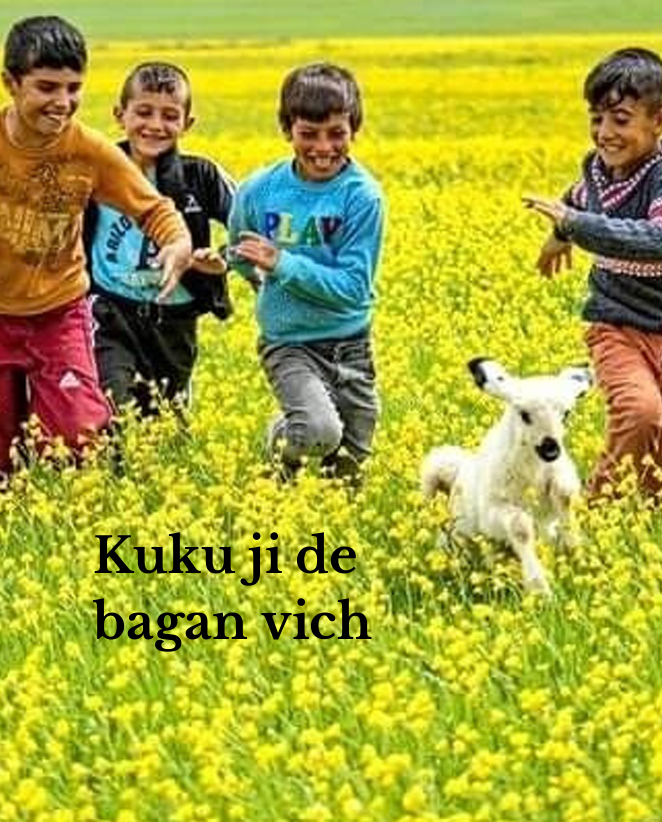
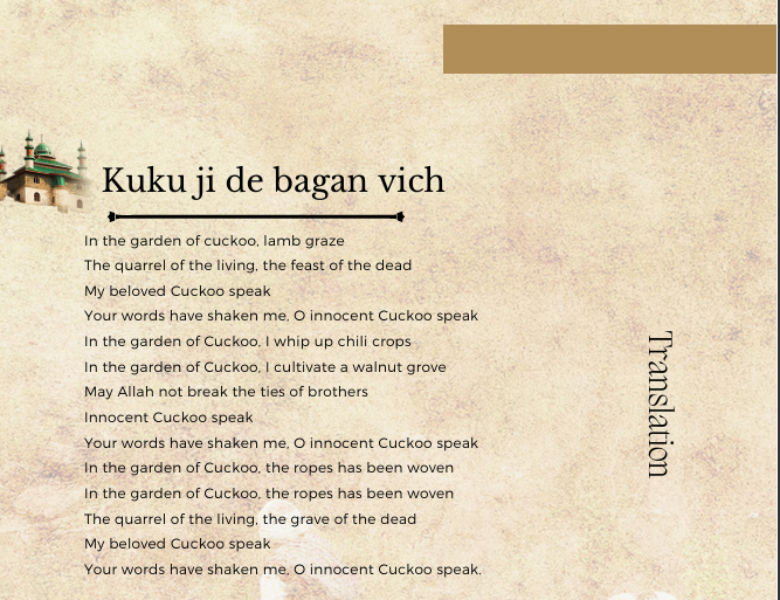
The poem is pictorially centered in the dynamic picture of the garden, where all the elements—the grazing lambs, the spun ropes—each represents the contraries of life. The formal placement of stanzas reflects the progression of the speaker's inner journey, and the structure underlines the link between nature and human feeling. The poem is thus able to progress in a fluid motion that draws readers into the symbolic beauty of the garden and abstractly considers deeper existential issues, rendering it visually and emotionally unified.

